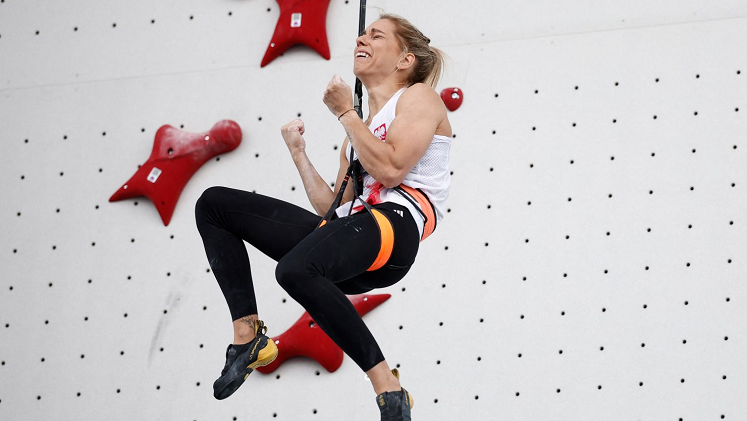Introduction:
The world of sports is ever-evolving, and the Olympics are no exception. When Sport Climbing Combined debuted at the Tokyo 2020 Games, it marked a revolutionary moment, blending speed, strategy, and strength. Unlike traditional events, sport climbing combined tests athletes across three distinct disciplines: speed climbing, bouldering, and lead climbing. This thrilling combination demands versatility, focus, and peak physical ability — offering a breathtaking spectacle for fans worldwide.
Whether you’re an aspiring climber, a sports enthusiast, or a curious viewer, this guide will take you through everything you need to know about Sport Climbing Combined Olympics — and why it’s quickly becoming one of the most electrifying events in modern sporting history.
Understanding Sport Climbing Combined
What Is Sport Climbing?
Sport climbing involves climbing artificial walls equipped with holds for hands and feet. Unlike traditional outdoor climbing, it’s done indoors under controlled conditions, making it accessible and safe for all ages and skill levels.
Sport climbing itself splits into different disciplines:
- Speed climbing focuses on rapid ascent.
- Bouldering challenges climbers to solve complex problems without ropes over shorter walls.
- Lead climbing tests endurance on taller walls with safety ropes.
The “Combined” Format Explained
In the Sport Climbing Combined format, athletes compete in all three disciplines. Their rankings in each are multiplied together to determine the final score — the lower the score, the better. This format demands athletes master speed, power, agility, and endurance all at once.
For example:
- 2nd in speed × 1st in bouldering × 3rd in lead = 6 points.
The format truly rewards well-rounded climbers who can perform consistently across disciplines.
History of Sport Climbing in the Olympics

The Road to Tokyo 2020
Sport climbing made its Olympic debut at the Tokyo 2020 Summer Games, although the sport has long been popular in Europe, Japan, and North America. The International Federation of Sport Climbing (IFSC) played a vital role in promoting the sport’s global appeal and gaining Olympic recognition.
Changes for Paris 2024 and Beyond
After its successful Tokyo debut, sport climbing will return for Paris 2024 with an updated format:
- Speed climbing will be separated into its own medal event.
- Bouldering and lead climbing will be combined for a second medal.
This evolution aims to better showcase the individual skills of top climbers and offers more opportunities for athletes to shine.
Sport Climbing Disciplines in Detail
Speed Climbing
Imagine a vertical sprint. In speed climbing, two climbers race up a 15-meter wall set with identical holds. Every move counts — a slip could cost precious seconds.
Top athletes finish in less than 6 seconds for men and 7-8 seconds for women. Reaction time, explosiveness, and route memorization are critical for success.
Bouldering
Bouldering focuses on solving “problems” — short climbing routes that require creative solutions.
Key features:
- No ropes needed.
- Limited time to complete multiple problems.
- Challenges emphasize power, flexibility, and technique.
Athletes are allowed multiple attempts within a time limit, and each problem demands quick thinking and incredible body control.
Lead Climbing
Lead climbing tests stamina and technical skill. Climbers attempt to get as high as possible on a tall wall (over 15 meters) within a time limit.
- Climbers clip their rope into quickdraws for safety as they ascend.
- Points are awarded based on the highest hold reached.
It’s a pure test of endurance, route reading, and calmness under pressure.
Key Athletes Who Made History
Highlights from Tokyo 2020
- Alberto Ginés López (Spain) stunned the world by winning the men’s gold medal.
- Janja Garnbret (Slovenia), already a legend in the climbing world, claimed women’s gold with an incredible all-around performance.
Their victories helped showcase the strategic depth and athletic artistry of sport climbing.
Stars to Watch in Paris 2024
Keep an eye on:
- Adam Ondra (Czech Republic): Technical genius and fan favorite.
- Brooke Raboutou (USA): Young prodigy with incredible agility.
- Tomoa Narasaki (Japan): Speed and style combined.
These athletes are not just competitors — they’re pioneers shaping the future of the sport.
Why Sport Climbing Combined Captivates Audiences
Thrill and Drama in Every Move
Unlike marathon events or lengthy matches, sport climbing combined offers quick, action-packed drama. A slip, a daring move, a strategic choice — every second matters.
Diversity and Inclusiveness
Sport climbing is truly global and inclusive. Men and women compete with equal status, and the sport embraces athletes from a diverse range of backgrounds.
Gateway for New Viewers
The easy-to-understand format, combined with heart-stopping action, makes sport climbing combined the perfect entry point for new Olympic fans.
How to Get Involved in Sport Climbing
Find a Local Climbing Gym
Most cities now have indoor climbing gyms offering beginner classes. You don’t need prior experience — just a willingness to challenge yourself and have fun.
Start with Bouldering
Bouldering is often the easiest way to begin because it doesn’t require ropes or harnesses. It’s affordable, social, and a fantastic workout.
Train Your Mind and Body
Sport climbing is as much mental as it is physical.
Focus on:
- Strength training
- Flexibility
- Problem-solving skills
Joining the climbing community can lead to new friendships, adventures, and personal growth.
Future of Sport Climbing Combined in the Olympics
Expanding Formats
With the success of Tokyo and anticipated excitement for Paris 2024, expect even more refined formats in future Olympics — possibly separate medals for each discipline.
Greater Global Representation
More countries are investing in climbing programs, meaning future Olympics will see new nations rise and surprise medalists emerge.
Inspiring the Next Generation
The dynamic, accessible nature of sport climbing combined is inspiring a new generation to take up the sport — ensuring its place in the Olympic spotlight for years to come.
FAQs about Sport Climbing Combined Olympics
1. What is Sport Climbing Combined in the Olympics?
It’s an event where athletes compete across three disciplines — speed climbing, bouldering, and lead climbing — and their rankings are multiplied to determine final standings.
2. Why was Sport Climbing Combined criticized at Tokyo 2020?
Some felt it unfairly forced specialists to compete in unfamiliar disciplines. The updated Paris 2024 format addresses this by separating speed climbing.
3. How is scoring calculated in Sport Climbing Combined?
Each athlete’s placement in each discipline is multiplied. For example: 2nd × 3rd × 1st = 6 points. Lowest score wins.
4. Who are the top athletes in Sport Climbing Combined?
Janja Garnbret, Alberto Ginés López, Adam Ondra, and Tomoa Narasaki are among the biggest stars.
5. Will Sport Climbing remain an Olympic sport?
Yes! After its successful debut, it’s been confirmed for Paris 2024 and is expected to remain a key part of future Games.
Conclusion: The Sky’s the Limit
Sport Climbing Combined has redefined what it means to be an Olympic athlete. Combining explosive speed, problem-solving brilliance, and relentless endurance, it’s a sport that captures the imagination and the spirit of the modern Games.
As it evolves with more inclusive formats and wider global participation, one thing is clear: in sport climbing combined, the only direction is up.



